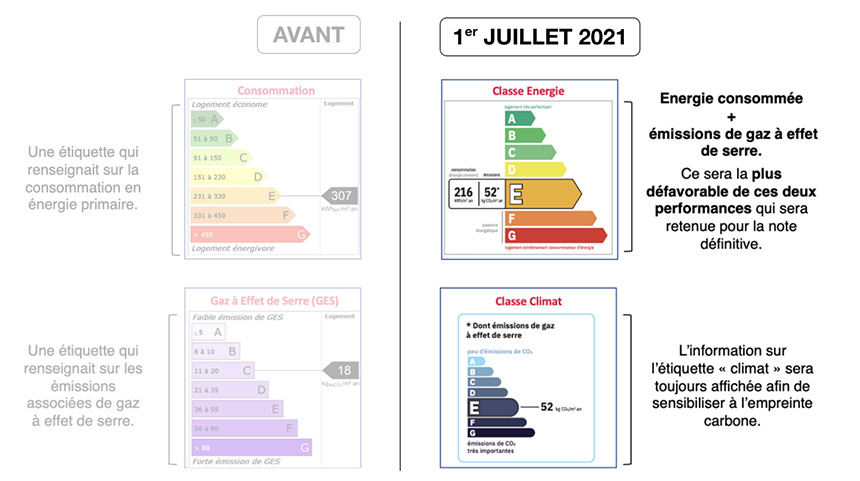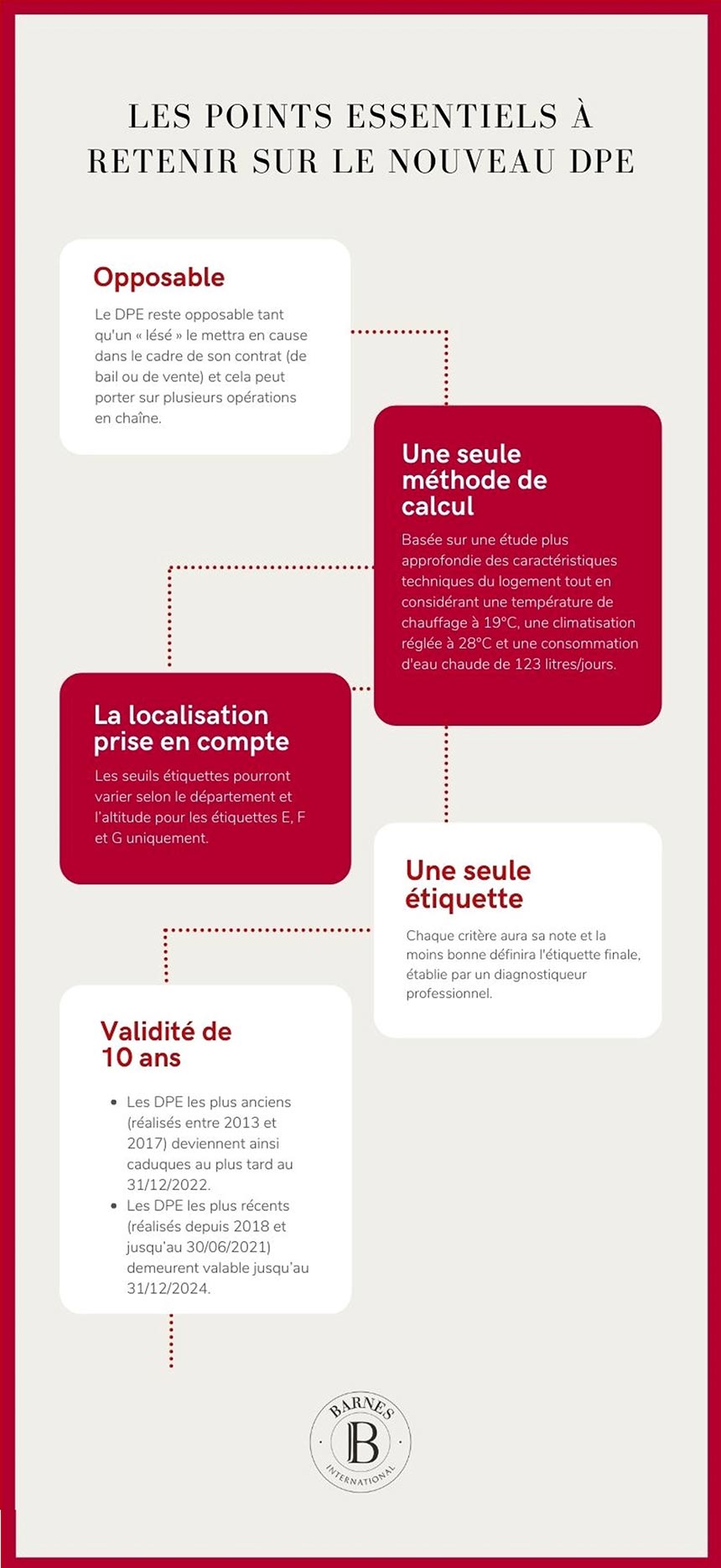
Coming soon
16/07/2021

Before:
A label giving information on primary energy consumption.
A label giving information on GHG emissions.
From 1 July 2021:
Energy consumed + GHG emissions. Whichever is the less favourable of these two performances will be used for the definitive score.
The information on the “climate” label will always be posted in order to raise awareness of the carbon footprint.
The amended French law on energy performance diagnostics (DPE) came into force on Thursday 1 July 2021. It is now enforceable and environmental, in that it no longer takes account only of energy performance but also of the characteristics of the property.
The Energy Performance Diagnostic, obligatory for properties sold or rented, is now enforceable and targets energy-intensive properties. In particular, those classified F and G will be prohibited for rental around 2028.
The enforceability of the diagnosis is the right of any buyer or tenant to demand that a vendor’s or lessor’s failure to fulfil its obligations or an analytical error in the diagnosis of the property be remedied.
In the interests of reliability, the diagnosis will be underpinned by a more in-depth study of the technical characteristics of the residential property such as insulation, construction materials and means of heating.
Out of concern for the environment, the study will also incorporate two new energy criteria: lighting and ventilation, while maintaining the criteria of heating and hot water production.
The validity of the new DPE energy performance certificate remains ten years. But be careful! To reduce the problem of the simultaneous existence of enforceable and non-enforceable energy performance certificates, the expiry date of the old DPE certificates is amended:
The label thresholds may vary depending on the département and the altitude for labels E, F and G only.
From now on each criterion will have its score and the least favourable will determine the final label, issued by a professional diagnostics expert. These labels will range from A (70 kWh/m²/yr for energy; 6 kg/m²/yr CO2 equiv. for climate) to G (420 kWh/m²/yr for energy; 100 kg/m²/yr CO2 equiv. for climate).
The owner of a residential property must obligatorily provide the necessary information to the diagnostics expert regarding the property. Blank labels will no longer be admitted for residential properties built before 1948 or in cases where consumption figures are not provided.
With effect from 1 July, no residential property can present a blank energy performance certificate. For those already issued, it would be wise to update them on the basis of these new calculation rules.
From 1 January 2022, it will be obligatory to post both labels and an estimate of the average amount of the energy bills with all property advertisements. Apart from this, the new version of the DPE will include a number of recommendations of works to be carried out to improve the energy performance of the property such as insulation of attics, installation of a heat pump or verification of the sealing of window frames.
Here is a short summary of the important points of this reform of the DPE applicable since 1 July 2021:

The essential points to bear in mind about the new DPE
The DPE is enforceable in that an “aggrieved party” can challenge it in the context of the sale or lease contract, and this could involve a chain of several transactions.
Based on a more in-depth study of the technical characteristics of the residential property, assuming a heating temperature of 19°C, air conditioning set to 28°C and consumption of hot water of 123 litres per day.
The label thresholds may vary depending on the département and the altitude for labels E, F and G only.
Each criterion will have its score and the least favourable will determine the final label, issued by a professional diagnostics expert.
The oldest DPEs (issued between 2013 and 2017) will now expire not later than 31 December 2022.
The most recent DPEs (issued between 1 January 2018 and 30 June 2021) remain valid until 31 December 2024.
© Barnes Lyon - published on Barnes International on 16/07/2021
Read this article in its integrality by clicking on the following link:
https://www.barnes-lyon.com/ac...
More news
Real Estate & Art de Vivre
14/11/2025
Perspective
03/11/2025
Perspective
24/10/2025
News
07/10/2025
Perspective
19/09/2025